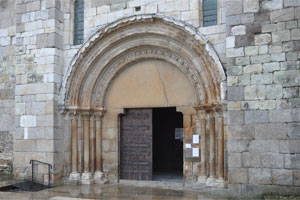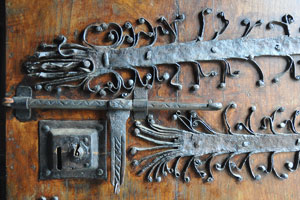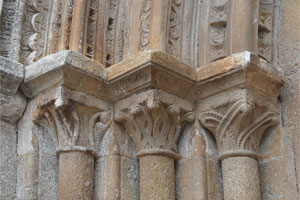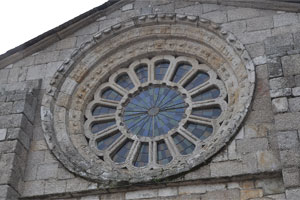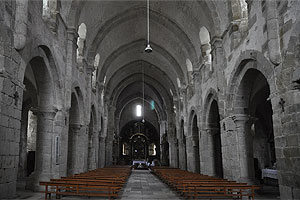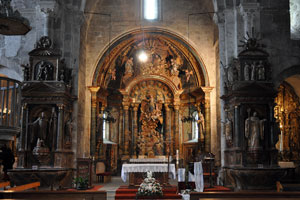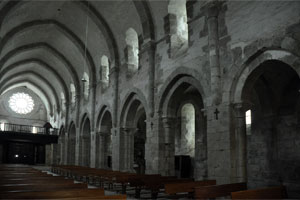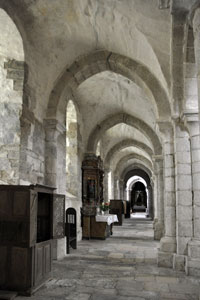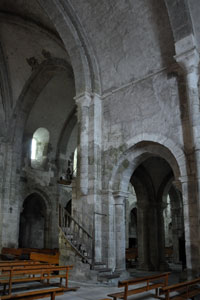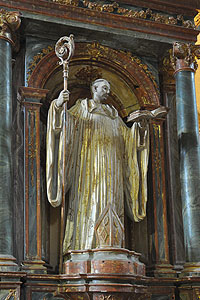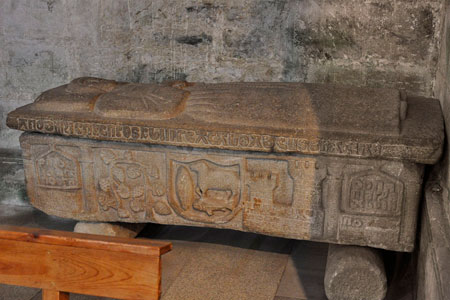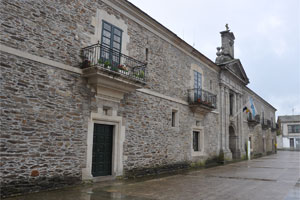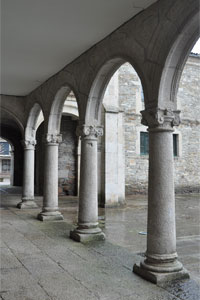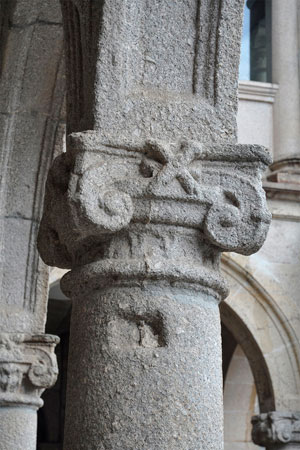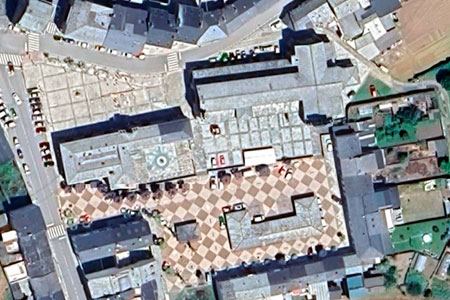According to Yepes, a Benedictine monastery may have existed here in 997, but the unreliability of the source means that this assertion must be disregarded. In 1151, Alfonso VII donated some wasteland in the area known as Meira, suggesting that at that time the monastery had not yet been established. Álvaro Rodríguez (†1167), the recipient of this donation, and his wife, Sancha Fernández, are believed to have been responsible for founding the new monastery. In fact, in 1154, Alfonso made another donation, this time to Vidal of Meira, the first abbot of this house.
On the other hand, there is news of the existence of an inscription, now lost, which placed the Cistercian foundation in the year 1142. All this allows us to affirm that the foundation of the monastery in this place took place between 1151 and 1154, without ruling out the possibility that it was the result of the transfer of a community formed elsewhere in 1142; in fact, the Cistercian chronicles date it to 1143. In any case, the new house was founded from the abbey of Clairvaux (Aube), Bernard of Clairvaux (1090-1153) is considered to have been directly involved in it. For a long period of time, Meira benefited from the favours of the monarchy, which allowed it to enjoy a comfortable economic position.
During the 13th century, the monastery clashed with feudal lords of the surrounding area, the bishops of Mondoñedo and other monasteries of the same order due to economic differences. Two female Cistercian abbeys depended on Meira: San Salvador de Ferreira and Santa María de Moreira (Castroverde). In 1504, the latter became the priory of Meira, now without a female community. During the 15th century, this house, like most of the surrounding monasteries, went through a period of decline, mainly due to the existence of commendatory abbots with little connection to the communities they led.
However, in Meira this situation was not as distressing as in other monasteries. In any case, the house was reformed, and in 1503 it was affiliated to the Cistercian Congregation of Castile, which led this establishment to a period of stability that allowed for the architectural renovation of the monastery. In the 16th century, the construction of a new cloister was undertaken to replace the previous one, as well as the construction of a new cloister and its annexes. At the end of that century, a philosophy school was established.
In the 19th century, the monastery and college of Meira suffered the effects of the Peninsular War, when it was transformed into a hospital. Once it was recovered and restored, it suffered a new temporary dispersion of the monks as a result of the "Trienio Liberal", which again dismantled the monastery. Subsequently, the disentailment of 1835 left it definitively without a religious community. The monastery was in a state of ruin when, in 1845, it was ceded to the City Council. Later, some of the outbuildings were restored, especially the church, and today only this building and part of the outbuildings remain, with the remains of the 16th century cloister, occupied by the rectory and the municipal offices.
Affiliation of Meira
According to the Originum Cisterciensium (L. Janauschek, 1877)- FREIRE CAMANIEL, José (1998). El monacato gallego en la alta edad media, vol. II. La Corunya: Fund. Pedro Barrié de la Maza
- GARROTE RECAREY, María (2011). Santa María de Meira. Transformaciones del monasterio y génesis de la villa. Abrente, núm. 42-43
- JANAUSCHEK, Leopoldus (1877). Originum Cisterciensium. Vol. 1. Viena
- MANRIQUE, Angel (1642). Cisterciensium Annalium, Vol. 1. Lió: L. Anisson
- PÉREZ GONZÁLEZ, José María; dir. (2018). Enciclopedia del Románico en Galicia. Lugo. Aguilar de Campoo: Fundación Santa María la Real
- PÉREZ RODRÍGUEZ, Francisco Javier (2008). Mosteiros de Galicia na Idade Media. Ourense: Deputación Provincial de Ourense
- SÁ BRAVO, Hipólito de (1972). El monacato en Galicia. Vol. 1. La Corunya: Librigal
- VILLAAMIL Y CASTRO, José (1904). Iglesias gallegas de la Edad Media. Madrid: San Francisco de Sales
- YAÑEZ NEIRA, Damián (1988). Aproximación al abadologio de santa María de Meira. Compostellanum, vol. 33, núm. 3-4
- YAÑEZ NEIRA, Damián (1993). El monasterio cisterciense y la villa de Santa María de Meira. Diputación P. de Lugo
- YAÑEZ NEIRA, Damián; coord. (2000). Monasticón cisterciense gallego, vol. 2. Lleó: Edilesa
- YEBRA DE ARES, Antón (1994). La arquitectura cisterciense en Santa María de Meira. Boletín do Museo Provincial de Lugo, núm. 6
- YEPES, Antonio de (reed. 1960). Crónica General de la Orden de San Benito. Vol. III. Madrid: Atlas


